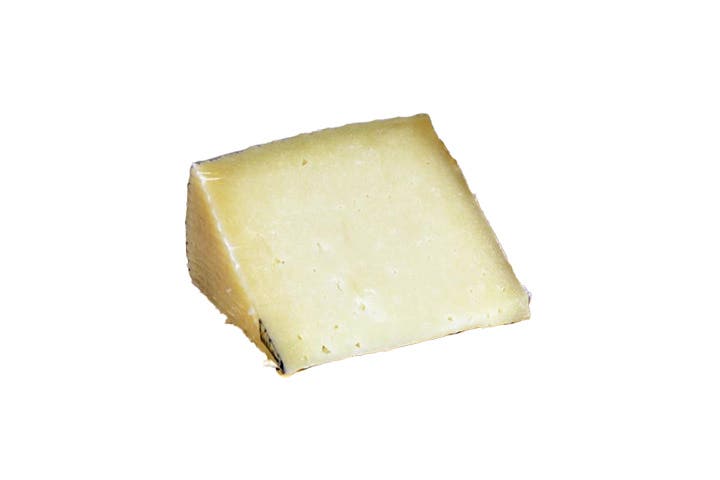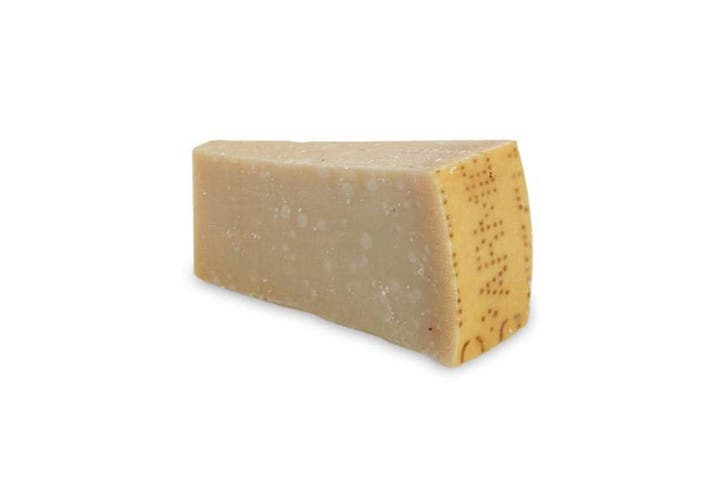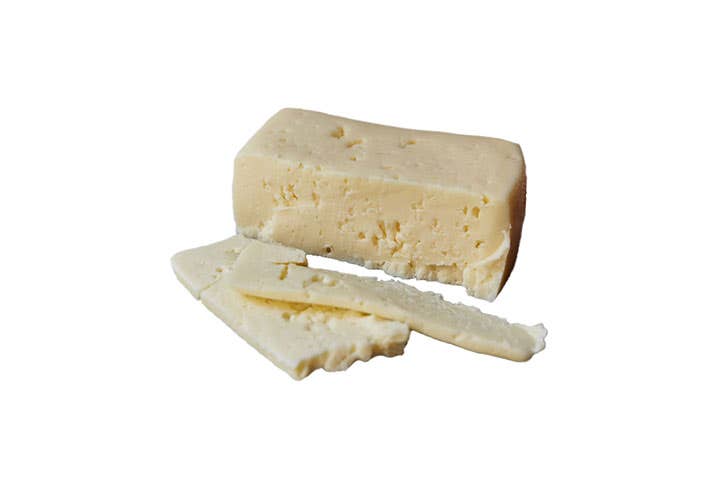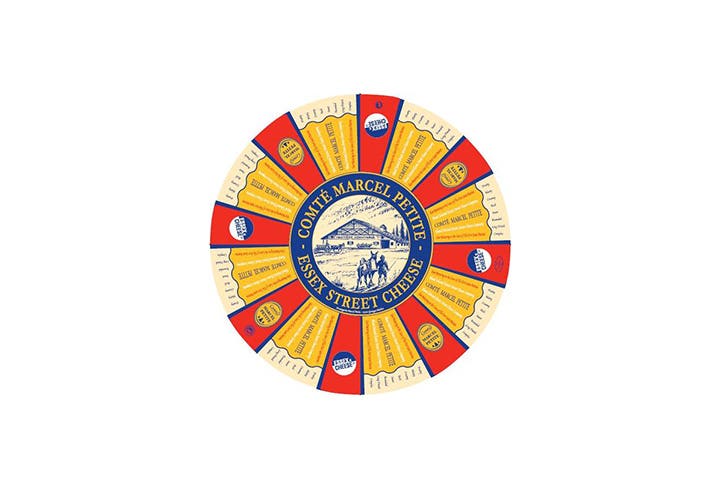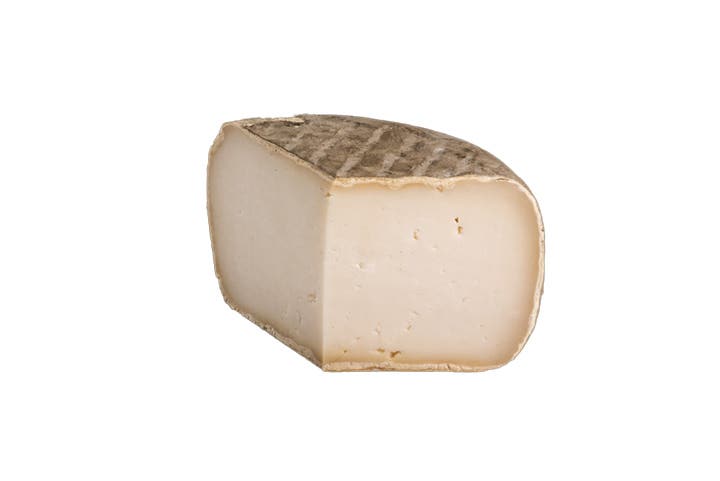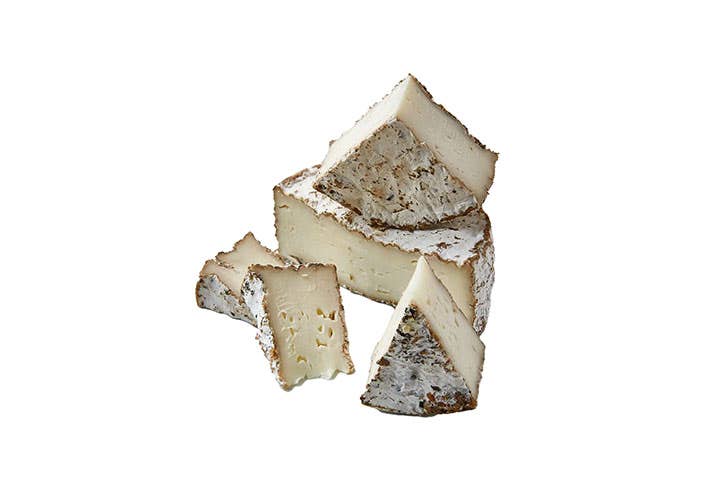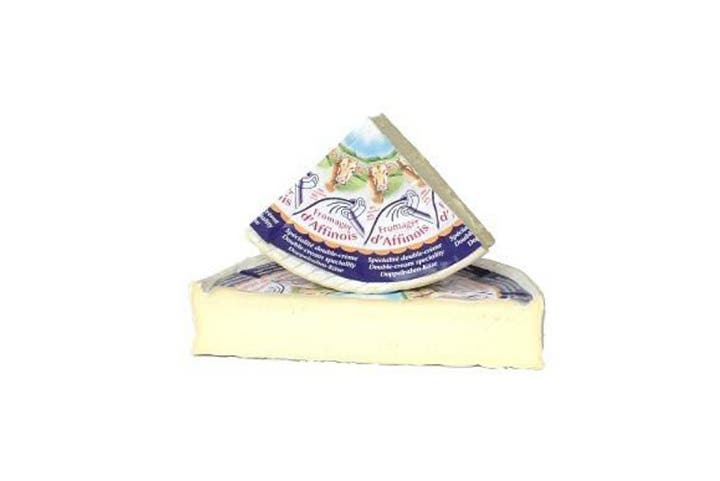A Michelin-Star Chef Calls These Cheese and Charcuterie Pairings “Soul Mates”
Zesty chorizo has met its match.
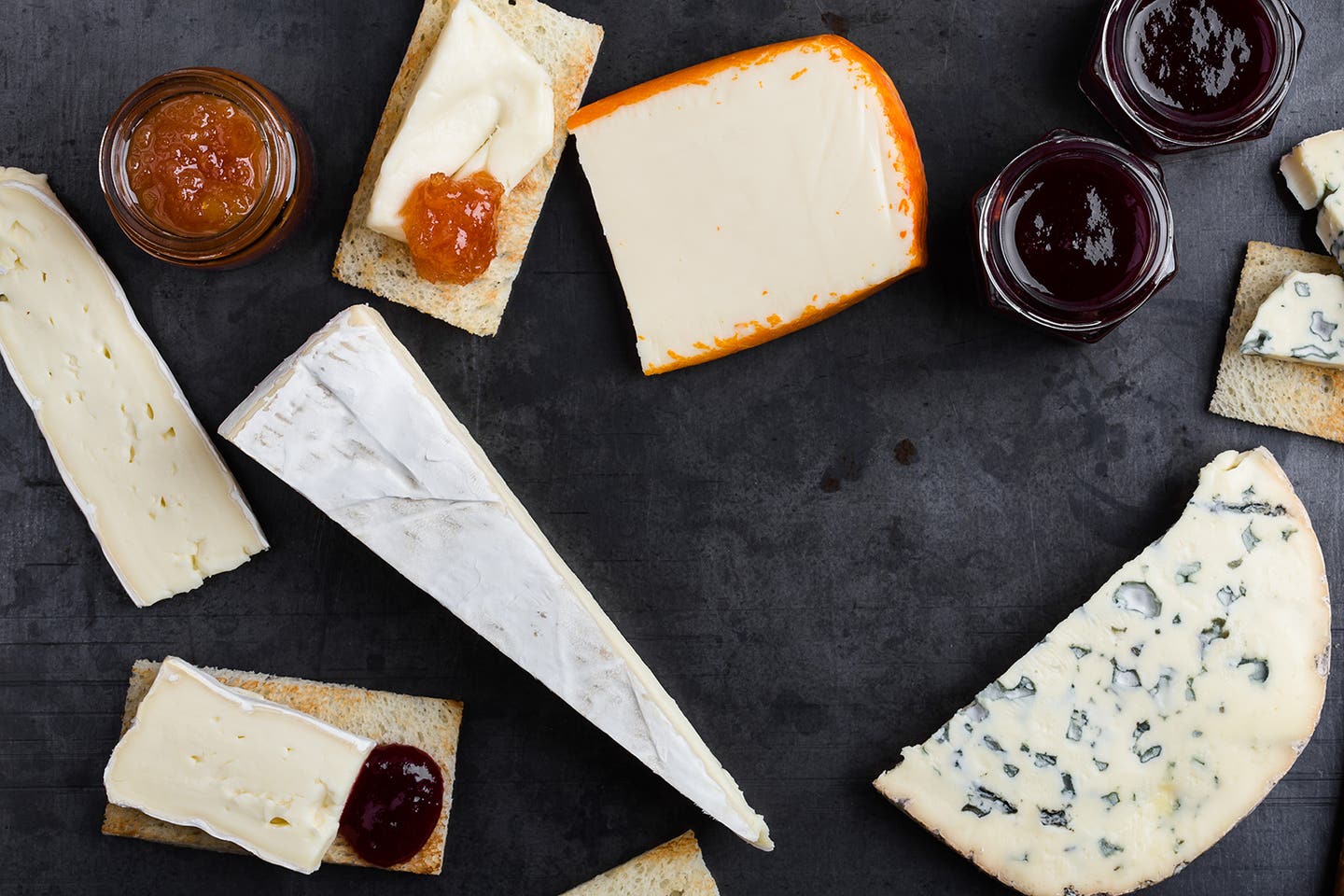
The term “charcuterie” comes from the French word “chair” (“flesh”) and “cuit” (“cooked”). Considered an important culinary craft since at least the 15th century, the specialized shop selling confits, foie gras, and a selection of prepared foods is also called a charcuterie. Their owners, “charcutiers,” traditionally hung their goods in their shop windows to draw customers in. Not that the French have a monopoly on a tradition of cured meats—the German “delicatessen” and the Italian “salumeria” are also meat meccas, as are Spanish markets with their stunning legs of jamón.
While charcuterie today is considered a luxury, it began as a necessity for our forebears. Way before refrigerators were invented, the oldest humans needed to preserve meat so that they could enjoy it before it spoiled. It’s reasonable conjecture that one of our earliest ancestors hung a fresh catch near the fire and realized that the smoke transformed the meat into something that lasted significantly longer—and was unusually delicious. And then yet another addition brought a different preserved food to the mix: cheese.
“Cheese and charcuterie are meant to be together—essentially, they are soul mates,” says Maria Gaube, a Michelin-starred pastry chef who followed her passion for cheese and now runs the catering and corporate sales business at Murray’s Cheese.
But figuring out how to curate the ideal spread can be intimidating when you gaze into a meat-and-cheese case and are greeted with dozens—or even hundreds—of options. Which is why we brought in the experts.
“When I’m pairing cheese with charcuterie, with booze, or anything really,” says Kat Craddock, editorial director of recipes at SAVEUR and a judge at the New York Cheesemonger Invitational, “I find that the easiest way to pair wisely is to match items with similar provenance. Sicilian wines, salumi, and cheese tend to go great together. So do Provençal wines, charcuterie, cheese, and so on and on. Those food and drink traditions evolved alongside each other, and they tend to be a natural fit.”
“What goes together grows together,” is how Gaube puts it, and it’s a great rule of thumb for serving cheese. For example, Manchego—a product of La Mancha, Spain, that’s made of sheep’s milk—goes nicely with jamón Ibérico, a dish from the same region. The semisoft, earthy, and lightly sweet notes of the Manchego really help a thin slice of buttery, salty, smooth jamón sing.
“Sometimes combining two unexpected items also works wonders,” Gaube explains. “Opposites attract,” is a general, powerful rule of flavor and texture, and it explains why sweet honey is such a welcome accompaniment to savory cheese and charcuterie, or why it’s so satisfying to spread creamy brie on a crunchy cracker.
Here are some general tips to help you find the best cheese for charcuterie, but at the end of the day, if you’re wondering whether to try something, go for it. You might just discover a new and highly delicious pairing.
Our Top Picks
- Best with Jamón Ibérico: Manchego
- Best with Prosciutto: Parmigiano-Reggiano
- Best with Genoa Salami: Havarti
- Best with ’Nduja: Comté
- Best with Chorizo: Cabra Romero
- Best with Truffle Salami: Hudson Flower
- Best with Soppressata: Fromager d'Affinois
Best with Jamon Iberico: Manchego
Best with Jamon Iberico
Country of Origin: Spain
Why we chose it: This sheep’s milk favorite plays off the rich flavors of silky jamón.
Manchego is flavorful yet absolutely approachable, making it a great choice for cheese newbies and experts alike. It has a briny tartness that’s beautifully balanced by an undercurrent of sweetness. Depending on the season, the wheel, and the maker, it might have sweet notes of caramel or honey, or a piquant, gamey spiciness. This is a particularly gorgeous wheel, made with raw milk from a herd of 3,500 Manchegan sheep and crafted by the Villadiego estate, one of the oldest farmhouse producers of Manchego cheese in existence.
Best with Prosciutto: Parmigiano-Reggiano
Best With Prosciutto
Country of Origin: Italy
Why we chose it: Parma is home to two of Italy's most renowned culinary exports—Parmigiano-Reggiano and prosciutto di Parma—and these rich, unique, umami-full delicacies are even more extraordinary together. (Pro tip: You also can’t go wrong adding a drizzle of really good balsamic.)
Parmigiano-Reggiano has been crafted in Italy’s Emilia-Romagna region, between the Po and Reno rivers, since the Middle Ages. Today, almost 1,000 years later, it’s still made practically the same way it has been from the very beginning: with simple, fine ingredients, and with great respect for artisanal traditions. Today, Parmigiano-Reggiano cheese is one of the most beloved icons of Italian culinary life, a true masterpiece.
Best with Genoa Salami: Havarti
Best With Genoa Salami
Country of Origin: USA
Why we chose it: Gaube advises pairing a firm, salty, and peppery meat like Genoa salami with a milder herbaceous cheese like havarti. Made in Wisconsin with whole milk, this havarti ups the richness factor by adding cream in the process of cheesemaking. It’s surprisingly luxurious and stands up to the depth of the salami.
Also consider: Project X, a cave-aged cheese from Murray’s. The rinds of Project X are washed in fennel pollen and Gewurztraminer, which imparts a sweet but herbaceous hazelnutty note. These herby elements pair well with the hard, fragrant salami.
Best with ’Nduja: An Alpine-Style Cheese Like Comte
Best with N'duja
Country of Origin: France
Why we chose it: This alpine-style cheese has plenty of depth of flavor, and a smooth, firm texture that contrasts beautifully with silky ’nduja. “The soft, spicy, and fiery-red color of the spread imparts a lovely kick to the milder flavors of our alpine favorites, creating an unexpected but lovely surprise in one bite,” says Gaude.
Comté has been made in more or less the same way for a thousand years and counting. It's a cheese that's hard not to love—it’s creamy, roasty, nutty, complex, versatile, and very possibly addictive. These wheels are aged in the cellars of Fort Saint Antoine, also called the “Cathedral of Comté.” Built in the late 1800s for the Franco-Prussian War, the enormous space was turned into a Comté-aging facility, or “affineur,” half a century ago when Marcel Petite realized the cool, humid conditions of the cut and vaulted stone, covered with a thick layer of soil, would provide the ideal conditions for “affinage lent” (“slow maturing”).
Also consider: Gruyère. Master cheesemaker Michael Spycher has been making Gruyère in the tiny Swiss village of Sumiswald for nearly two decades, and you can nearly taste the mountain grasses, delicate meadow flowers, and alpine herbs in this gorgeously balanced wheel. Both of these big-flavored wheels stand up to ’nduja, that savory delight of pork fat, herbs, spices, and slightly spicy Calabrian peppers.
Best with Chorizo: Cabra Romero
Best with Chorizo
Country of Origin: Spain
Why we chose it: This creamy goat’s milk cheese can hold its own with zesty chorizo. Cabra Romero is a relatively new production in Murcia, Spain. In the final days of aging, the naturally sweet pasteurized goat cheese is rubbed with a generous quantity of rosemary and lard, and the herbal aroma permeates the wheel.
Also consider: Garrotxa, a semi-firm wheel made in the foothills of the Pyrenees with a great white pepper piquancy. With a subtle sweetness and a woodsy aroma, Garrotxa pairs beautifully with a glass of cava and few slices of chorizo.
Best with Truffle Salami: An Herb-Crusted Cheese Like Hudson Flower
Best with Truffle Salami
Country of Origin: USA
Why we chose it: These herb-encrusted cheeses have the fragrant depth to stand up to earthy truffled salami. When pairing sausages with truffles, this cheese has an aromatic, heady depth from the addition of herbs. In Hudson Flower, decadent sheep's milk cheese from Old Chatham, New York, gets a fresh fall coat in a secret blend of rosemary, lemon thyme, chervil, and hop flowers. The bright herbs impart robust pine-y and floral aromas.
Also consider: Pecorino Camomilla. An original Italian sheep’s milk cheese coated in chamomile, Pecorino Camomilla is stunning and complex with a silky, balanced profile and a complex, earthy depth.
Best with Soppressata: A Creamy Cheese Like Fromager d'Affinois
Best with Soppressata
Country of Origin: France
Why we chose it: The supple, buttery taste allows the herbs and spices in the soppressata to shine through. The completely decadent texture of Fromage d’Affinois may remind you of a triple-creme, but that texture is achieved by ”ultra filtration,” which breaks down the fat molecules in the milk in order to further disperse them through the paste. The result is a thick, nearly whipped spread of tangy, milky goodness, the better for digging into with meaty soppressata. Also consider: La Tur. Another excellent option: a dense, creamy blend of pasteurized cow, goat, and sheep milk from Italy’s Piedmont region. Runny and oozing, this is another luscious, creamy beauty that you’ll watch guests devour when you put it out with, well, just about anything.
How We Chose These Products
Writer Hannah Howard has been working with cheese for more than a decade, and these pairing principles and guidelines are best industry practice, but they’re also not meant to be taken too seriously.
Features to Keep in Mind When Buying Cheese
Age
Gaube likes to choose different textures, ages, and milk types when she’s building a platter. “It’s important to have some variety; this way you can mix and match items on the board and discover new combinations you perhaps had never tried,” she explains. In general, fresh cheese tends to be mild and slowly get more punchy (in flavor) and firmer (in texture) as it ages.
Origin and Maker
Both Gaube and Craddock recommend switching this up throughout a cheese platter. “When assembling a selection of cheeses, you generally want to aim for a range of ages and textures so you don’t overwhelm—or worse, BORE—your guests,” says Craddock. “Unless, of course, you want to go hard into a vertical tasting of a single style—say, all the Roqueforts or Vermont cheddars you can find. If you want to do that, more power to you!”
Firm Vs. Soft
From a wheel of Époisses that runs off the cutting board to a super-aged gouda that crumbles under pressure, it’s fun to explore a variety of textures.
Ask the Experts
Q: What ingredients should I consider adding to a platter aside from cheese and charcuterie?
You can have so much fun with this. Gaube usually selects three to four different accompaniments across different textures and flavors. Some of her go-tos include spreads, jams, or honey (“Seasonality is the name of the game here; think apple butter in the fall or a spring honey,” she notes) dried fruits, fresh fruit/veggies or nuts (“Salty or sweet nuts are always clutch,” she suggests) and fruits and crudites that are easy to grab, like grapes, fresh cherries, and sliced cucumbers. She also recommends something salty or briny, like olives or cornichons, plus having fun with different crackers, breads, and crisps.
Q: What’s the best way to store soft cheese?
Remember, our experts say: Cheese is a living thing. “Proper storage is always a dance in controlling moisture content,” says Craddock. “Look at your cheese, touch its rind, and think about how the cheese wants to be stored. Does the rind feel damp and sticky? Wrapping a high-moisture cheese tightly in plastic can lead to ‘ammoniation’—as in, your cheese will start smelling like cat pee—so something really gooey like an Époisses needs a little breathing room. Wrap these in wax paper or plop them in a Tupperware and leave the lid ajar.”
Q: Does cheese go bad?
Yes, but it’s not quite as delicate as you may worry. “Cheese was invented to preserve milk, and it will be edible long after it is past its ‘prime,’” Craddock recommends. “Trim away any undesired mold and give it a taste. If it has over-ripened or started to dry out, consider blitzing it into a batch of fromage fort.” (Note: Consult with your healthcare provider if you’re pregnant or otherwise being careful.)
Our Take
Cheese and charcuterie are two of the foodstuffs most capable of spreading joy, so you have a fun job ahead as you set out to build a delicious, crowd-pleasing board. Try something new, take the suggestion of your cheesemonger (they have the ins!), and don’t be afraid to make a mistake. Then open a bottle of your favorite wine or cider and snack your heart out.
Keep Reading
Continue to Next Story
